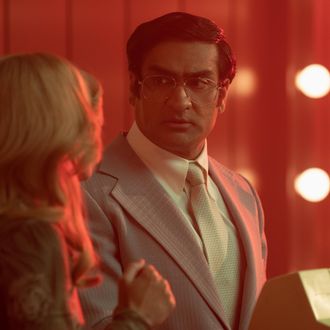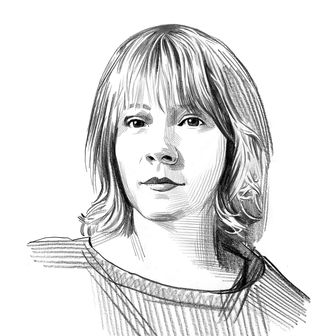
Welcome to Chippendales spans two decades and two coasts in its tale of greed and banana hammocks. Kumail Nanjiani stars as Steve Banerjee, the founder of Chippendales who stops at nothing to protect his empire of male strippers. It’s a story that evokes very particular sights, smells, and sounds: stripping anthems, disco lights, the screams of women, the smell of bronzer. Executive producer Jenni Konner credits the music supervisors for the fact that the show never bleeds into pastiche. “It was a fine line between the most famous songs and then a more subtle needle drop,” she said at the show’s red-carpet premiere on November 16. Konner has worked with Jonathan Leahy, Manish Raval, and Tom Wolfe since Girls. “On Single Drunk Female, they brought us the Saweetie song ‘Best Friend’ before it even came out,” Konner said. “They know what they’re doing.” Vulture spoke to Konner, Nanjiani, show creator Robert Siegel, actor Robin De Jesús, and show composer Siddhartha Khosla (whose sound you may recognize from his other hit Hulu show, Only Murders in the Building) about how Chippendales created its sound.
Siegel split the show into two separate soundscapes: “The show starts in L.A. in the ’70s, and that’s a lot of disco, a lot of funk, a lot of dirty horns. And then as the show progresses … it gets more electro, freestyle kind of stuff.” Siegel and De Jesús, who plays Ray Colon, are huge freestyle fans. “As a Puerto Rican, there’s a style of music that was really big to us, called freestyle,” De Jesús said. “It was a type of club music. Somewhere in the ’90s, it kind of died off.” Siegel name-dropped Stacey Q, Exposé, and Shannon’s “Let The Music Play” as freestyle touch points. But as the show descends into the gorier part of the story, the needle drops get darker too. “There’s some Depeche Mode, some Bauhaus, some more goth stuff,” Siegel said. “It covers a pretty wide spectrum.”
Composer Siddhartha Khosla had to marry the very synthetic sound of the era with a more traditional orchestral score. Welcome to Chippendales had an orchestra on every episode, a rare luxury in these leaner times. “It feels timeless,” he said of the classical-music approach. “You hear the ’80s, but there’s a larger epic saga.” To Khosla, the analog synths he grew up playing with defined that decade: “I got to use a lot of weird sounds I’d not played with since I was a kid, so it was great.”
All these elements came together in the edit for Nanjiani, who also serves as an EP on the show. He said editing was one of the best parts of the whole Welcome to Chippendales experience. “It’s also helpful,” he said. “When you do a scene and then you see the edited version of it, and you’re like, I know what it felt like to do this scene, and that feeling is missing from this. So let’s keep working until we can get that feeling.” Steve Banerjee was a very closed-off man, so the editing and scoring process helped clue the audience in to things that could only be hinted at in performance. “It’s not that this guy doesn’t feel, it’s that he doesn’t want to feel,” Nanjiani said. What better way to make someone feel what they don’t want to feel than with music?





